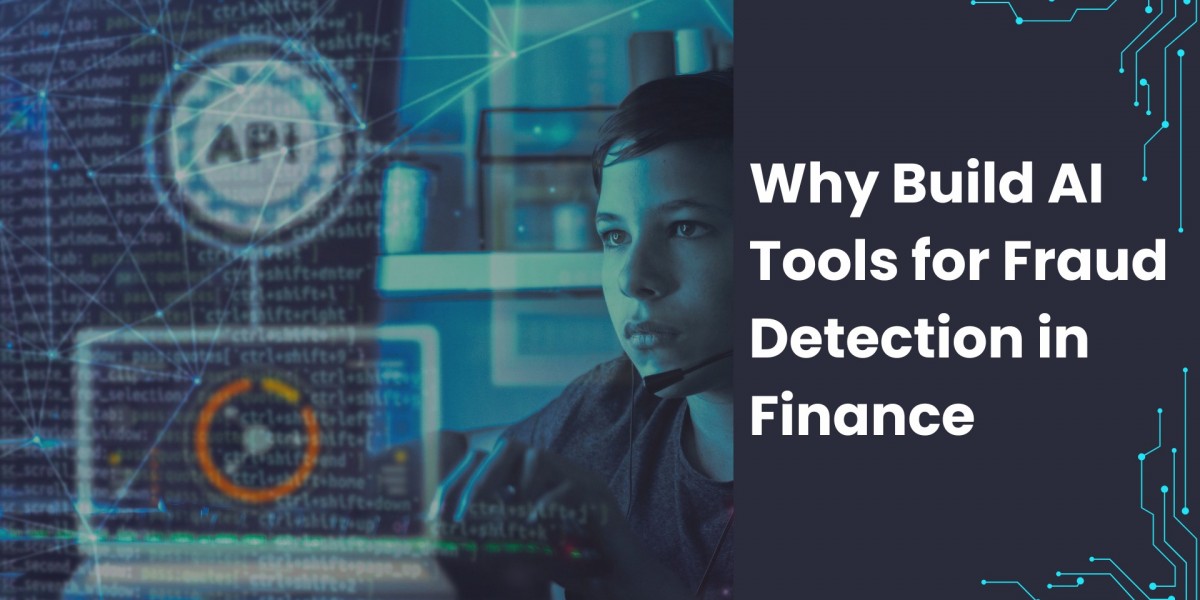In the age of digital banking and instant payments, fraud isn’t a side problem — it’s the frontline battle of the financial industry. Every second, millions of transactions move across the global network. Each swipe, tap, or transfer is an opportunity — for innovation or exploitation.
And as fraudsters evolve faster than compliance manuals can be written, artificial intelligence (AI) has become the new defense layer — the one capable of thinking, learning, and reacting in real time.
But building AI tools for fraud detection isn’t just about keeping criminals out; it’s about keeping confidence in. For banks, fintech firms, and global payment systems, AI represents the new foundation for trust, speed, and sustainability in digital finance.
Let’s explore why this transformation is both urgent and unavoidable — and how to do it effectively.
The New Reality of Financial Fraud
The rise of digital transactions has brought undeniable convenience — and unprecedented risk. Traditional fraud detection systems, designed for static rule-based triggers, are struggling to keep up with the sophistication of modern attacks.
Fraud has become dynamic. It no longer follows predictable patterns. It’s adaptive, often conducted by automated scripts or AI itself. Phishing, identity theft, synthetic identities, insider collusion, and payment diversion schemes have become increasingly intricate.
The Scope of the Threat
Global financial fraud losses exceeded $500 billion annually as of 2024, according to industry reports.
Digital banking fraud has surged by over 60% since 2020.
Every $1 lost to fraud costs organizations $4.23 in recovery, legal, and reputational damages.
For financial institutions, the message is clear: traditional fraud detection methods—based on static thresholds, manual reviews, and after-the-fact alerts—are no longer sustainable.
Why AI Has Become the Central Defense Mechanism
AI doesn’t just detect fraud; it anticipates it. It finds what humans miss, learns from evolving attack vectors, and adapts without requiring explicit instructions.
The true power of AI in fraud detection lies in its ability to learn from behavior, not just data. Unlike rule-based systems that can be gamed, AI models continuously evolve — making them agile defenders in a constantly changing threat landscape.
Key Advantages of AI-Driven Fraud Detection
Real-Time Analysis: AI models evaluate thousands of transactions per second, flagging anomalies instantly.
Adaptive Learning: Algorithms self-improve by learning from both fraudulent and legitimate transactions.
Pattern Recognition: Machine learning identifies non-obvious relationships and patterns invisible to human analysts.
Reduced False Positives: Traditional systems often block legitimate transactions; AI improves accuracy and customer experience.
Cross-Channel Insight: Integrates data across mobile apps, ATMs, online banking, and card transactions for unified detection.
AI is not replacing human judgment — it’s enhancing it. Where humans bring intuition, AI brings pattern precision and relentless vigilance. Together, they create a defense system that’s both intelligent and proactive.
How AI Detects Fraud: The Technological Blueprint
To understand the strategic value of AI tools in fraud detection, it’s vital to grasp their underlying architecture.
1. Data Aggregation and Preprocessing
AI thrives on data volume and variety. In finance, this means pulling structured and unstructured data from:
Transaction histories
Geolocation data
Device fingerprints
Behavioral analytics (typing speed, login frequency)
Third-party risk databases
This raw data is cleaned, labeled, and transformed into standardized formats — ensuring that AI models can learn accurately and efficiently.
2. Feature Engineering
Feature engineering involves identifying the most relevant variables that distinguish normal behavior from fraudulent ones — such as transaction velocity, IP mismatches, or unusual spending patterns. This stage defines the intelligence level of your AI.
3. Model Development
AI fraud detection systems use multiple machine learning techniques:
Supervised Learning: Models are trained on labeled data (known fraud vs. legitimate cases).
Unsupervised Learning: Detects anomalies when historical fraud data is incomplete or unavailable.
Deep Learning: Neural networks learn subtle, complex patterns in high-dimensional datasets, especially for identity or payment fraud.
Graph-Based Learning: Builds relational models between entities (accounts, devices, merchants) to uncover fraud rings.
4. Real-Time Scoring Engine
Once models are trained, they operate as “scoring engines.” Each transaction receives a dynamic fraud risk score. If the score exceeds a threshold, it triggers a decision—block, flag, or verify.
5. Continuous Feedback and Retraining
AI systems never stand still. Every fraud attempt, every false alert, feeds back into the model to make it smarter. This is how fraud detection evolves from static monitoring into a living, learning ecosystem.
The Business Case for Building AI Fraud Detection Tools
AI-powered fraud detection isn’t a defensive expenditure; it’s a strategic investment. Its value extends far beyond compliance—it’s a driver of trust, efficiency, and brand differentiation.
1. Protecting Profitability
Fraud losses erode margins. AI systems reduce both direct fraud costs and operational overhead, cutting manual review times by up to 70%.
2. Enhancing Customer Experience
Fewer false positives mean smoother transactions for legitimate users. A frictionless experience builds customer confidence and retention.
3. Enabling Regulatory Compliance
AI systems offer audit trails and explainability features, helping institutions comply with AML (Anti-Money Laundering) and KYC (Know Your Customer) standards.
4. Building Brand Credibility
In finance, trust is capital. Firms that proactively protect their users against fraud gain a competitive edge in reputation and market value.
5. Future-Proofing Against New Threats
AI-driven systems can be retrained to adapt to emerging scams, ensuring long-term resilience against evolving fraud tactics.
Use Cases: Where AI is Transforming Fraud Detection
AI’s impact in finance is not theoretical—it’s operational. Here are the most prominent areas where it’s reshaping risk management.
Credit Card and Payment Fraud
Machine learning models analyze spending habits, device fingerprints, and geolocation data to detect irregular purchases within seconds—reducing chargebacks and fraud losses.
Insurance Fraud Detection
AI evaluates claims, policy history, and user behavior to identify exaggerations or fake claims. NLP algorithms analyze claim narratives for linguistic inconsistencies.
Loan and Credit Fraud
By analyzing application data, income records, and behavioral signals, AI identifies fraudulent loan applications and synthetic identities before approvals are issued.
Anti-Money Laundering (AML)
AI tools monitor millions of transactions for suspicious patterns, flagging potential laundering attempts faster than human teams could manually process.
Identity Theft and Account Takeover
Behavioral biometrics—like typing cadence or device angle—help AI recognize when an account is accessed by someone other than its rightful owner.
Challenges in Building AI for Fraud Detection
Despite its potential, AI fraud detection is complex to design, deploy, and maintain. C-level leaders must anticipate key challenges from the outset.
1. Data Limitations
Quality labeled data is scarce, especially for new fraud schemes. Poor data leads to underfitted models and false alarms.
2. Model Interpretability
Regulators require explainable AI (XAI). Financial institutions must ensure that AI decisions—like blocking a transaction—can be justified in human terms.
3. Bias and Fairness
If historical data contains demographic or behavioral bias, AI can unintentionally discriminate. Regular audits and fairness testing are critical.
4. Integration with Legacy Systems
AI models often need to coexist with aging infrastructure. Bridging old and new systems requires robust APIs and secure middleware.
5. Evolving Threat Landscape
Fraudsters learn too. They test AI systems to exploit weaknesses. Continuous retraining and adversarial testing are essential to stay ahead.
How to Build AI Fraud Detection Tools: A Strategic Framework
Developing AI tools for fraud detection requires a blend of technology, strategy, and foresight. Below is a framework followed by leading global financial firms.
Step 1: Define Objectives and Scope
Decide what the AI system must achieve—reduce false positives, detect insider threats, or identify AML violations. Align objectives with measurable KPIs such as fraud detection rate and alert accuracy.
Step 2: Establish a Data Strategy
Data quality defines AI quality. Ensure robust data pipelines for collecting, cleaning, and labeling transactions. Partner with third-party data providers when internal data is limited.
Step 3: Choose the Right Model Architecture
Different problems require different models:
Gradient Boosting Machines (GBM) for credit card fraud.
Autoencoders for anomaly detection.
Graph Neural Networks (GNNs) for uncovering fraud networks.
Step 4: Integrate Explainability and Ethics from Day One
Transparency isn’t optional. Use interpretable models or add XAI layers to ensure compliance and customer trust.
Step 5: Deploy Scalable Infrastructure
Leverage cloud-native platforms for agility and performance. Hybrid approaches allow sensitive data to stay on-premises while using cloud resources for computation.
Step 6: Continuous Learning and Governance
Create feedback loops that monitor performance, capture false positives, and retrain models periodically. Governance boards should oversee algorithmic accountability.
The Human Element in AI Fraud Detection
Even the smartest AI cannot replace human intuition entirely. The future of fraud detection lies in human-AI collaboration.
The Synergy Model
AI flags potential fraud patterns.
Analysts validate edge cases or ambiguous signals.
Feedback from analysts improves AI models.
This symbiotic cycle not only boosts accuracy but also ensures that ethical and contextual judgment remains part of decision-making.
Upskilling the Workforce
Organizations must train fraud analysts to interpret AI-generated insights, identify anomalies the system misses, and refine input parameters for better outcomes.
Emerging Technologies Shaping the Next Wave of Fraud Detection
AI is advancing faster than ever. The next decade will bring innovations that redefine how financial systems detect and deter fraud.
Federated Learning
Allows institutions to collaborate on fraud detection without sharing sensitive data—models learn collectively while preserving privacy.
Synthetic Data Generation
AI creates artificial datasets for training when real fraud examples are limited—helping improve accuracy without breaching confidentiality.
Multimodal AI Systems
Combines visual, textual, and behavioral data—useful for analyzing scanned IDs, claims documents, or voice transactions simultaneously.
Quantum-Resistant AI Models
Prepares fraud detection systems for the cryptographic challenges posed by future quantum computing breakthroughs.
Generative AI for Threat Simulation
AI can now simulate fraudulent behavior to test system resilience—a proactive defense mechanism that learns from its own mock attacks.
Leadership Perspective: The Strategic Imperative for C-Suite
For the executive suite, the question is no longer “Should we build AI fraud detection tools?” but “Can we afford not to?”
Key Strategic Priorities
Invest in AI Talent: Recruit data scientists and risk experts who understand both finance and modeling.
Build Ethical Governance: Establish oversight boards for responsible AI usage.
Embrace Transparency: Ensure explainable decisions to regulators and customers alike.
Foster Cross-Industry Collaboration: Partner with fintechs, regulators, and cybersecurity firms to share intelligence.
Measure ROI Beyond Cost Savings: Consider fraud prevention as brand protection—trust generates long-term financial value.
The Future: From Reactive Defense to Predictive Security
The evolution of AI in finance is moving from detection to prevention. Tomorrow’s systems will not only spot fraud—they’ll neutralize it before it manifests.
Imagine AI that can predict insider collusion by analyzing employee communication metadata, or that can dynamically adjust transaction thresholds based on global threat levels. This is the near future of financial fraud defense.
Enterprises that build AI today are building resilience for the next decade.
Conclusion
Building AI tools for fraud detection in finance is not just about defending transactions—it’s about defending trust. The financial industry runs on confidence, and in a digital-first economy, confidence must be automated, scalable, and intelligent.
AI delivers exactly that: the power to analyze, predict, and protect at machine speed, across borders and systems. For financial leaders, the decision to invest in AI software development solutions is not merely technological—it’s strategic. It’s how resilient institutions distinguish themselves in an age where speed, transparency, and trust define the future of finance.








